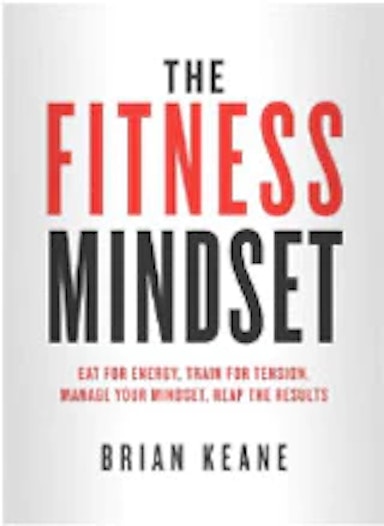Eliminating the reasons for fat to exist
- By Brian Keane
Eliminating the reasons for the accumulation of fat is a mission, at first glance, looks impossible. A certain amount of body fat is necessary for survival and therefore the idea of completely eliminating body fat is implausible.
According to Ori Hofmekler in Minimum Fat, Maximum Muscle, he discusses eliminating the metabolic reasons behind fat gain as to reduce it to a level of ‘biological set point’ i.e. where you are really lean but your body and mind are still performing at optimal level.
For example, the year I was hospitalised for a bleeding stomach ulcer, I was at my highest level of body fat (around the 20+ range). I felt horrible, sluggish and had very little physical or mental energy. In contrast, I competed at the World Fitness Model Championships for Bodybuilding in Las Vegas at about 4% body fat and I felt very similar: horrible, sluggish and tired.
This really begs the question, why would you feel the same if your body fat is higher than normal or lower than normal? The answer is understanding your own biological set point or what I call your ideal ‘metabolic set point’ – this is the point where your body is at its optimal range in terms of body fat i.e. low enough to feel and look great but not high enough to affect mental or physical performance.
For me, that’s around the 10% body fat range. That’s where I physically and mentally feel at my best. A funny (albeit obvious) thing happens when I drop below 10%, I start to feel sluggish, tired, I don’t remember things as clearly and my appetite increases to insatiable proportions.
However, more curiously, something similar happens when I climb above 10%- I get the same ‘cloudiness’ in my thoughts and memories but my hunger drops dramatically AND my energy increases significantly (for a short period of time)- why does this happen?
The same reason my hunger goes up when it drops too low, my body has decided on its own ‘metabolic set point’ – the point of metabolism or body fat range that it most comfortable being at. So when my body fat gets too low, my hunger goes up trying to get back to ‘homeostasis’, i.e. my point of ‘metabolic balance’ and if it gets too high, my hunger decreases trying to do the same thing.
Its like a thermometer in a room; if you set a thermometer at 37 degrees and turn up the heat, the temperature in the room will increase but as soon as you turn off the heat, the room temperature will go back to 37 degrees. The same if you open a window, the room temperature will drop below 37 degrees but once you close the window, it goes back to the original 37 degrees again.
Your metabolic set point is the like the thermometer in a room – your body has a certain level of body fat that its ‘conformable’ being at. For example, have you every gone on holidays and came back 4 or 5 pounds heavier only to be back at your normal weight within 10 days? Or lost weight or body fat for an event (wedding or birthday for example) only for you to go back to ‘normal’ 10-14 days later?
This is because your body has its metabolic set point and will always try and come back to ‘37 degrees’. Obviously you can fight this, if you continue to over eat after your holidays, you will progressively increase your weight or body fat as time goes on. In contrast, if you continue to live the exact lifestyle, training and eating habits that allowed you to drop 3 dress sizes or get six pack abs, then you will of course be able to maintain it and that’s where ‘re-setting’ your metabolic set point comes in.
That begs the question; can I reset my metabolic set point?
The answer is yes and there are two things you need to understand to fully understand how to do this:
1) How to do it the ‘right way’
2) Understanding the difference between subcutaneous and visceral body fat.
1) HOW TO DO IT THE ‘RIGHT WAY’:
This is why I have such an issue with ‘liquid diets’ – don’t get me wrong, they will work – if you eat 600 kcals a day for three weeks, you will lose weight and body fat. You will also mess up your hormones (leptin, insulin and ghrelin in particular) needed to maintain a lower level of body fat and keep a higher functioning metabolism. Not only will using these ‘diets’ to lose weight NOT reset your metabolic set point, you will actually ruin and down regulate the hormones needed to do exactly that.
Slowly and gradually reducing your body fat by keeping calories high enough to support hormones and maintain a healthy metabolism in conjunction with the right training programs and systems that steadily move your set point to a lower level – will allow you to lose body fat, reduce your weight (if weight loss is your goal) and KEEP it off long term.
“If you build a wall fast, it will fall fast” – Chinese Proverb.
If you lose weight or body fat too quickly without resetting your metabolic set point, you wont be able to maintain or sustain it long term. Invest in doing it the right way once and your will reap the benefits for the rest of your life. The one last thing you need to understand to fully support your fat loss goals is the difference between subcutaneous and visceral fat.
SUBCUTANEOUS AND VISCERAL FAT:
One of the main reasons for confusion about fat loss is that many people aren’t aware that there are two kinds of fat tissue in the body, each with a distinct sensitivity to fat breakdown (or lipolysis).
These two fat tissues are subcutaneous fat (which lies under the skin and you can ‘pull, feel and grab’) and visceral fat, which is internal (over the organs).
In his book Minimum Fat, Maximum Muscle, Ori Hoflmkler’s discusses how subcutaneous fat tends to be insulin-sensitive and therefore more resistant to fat burning, whereas visceral fat is more insulin resistant. Simply put, your body will burn through its visceral fat (fat over the organs) before it touches your subcutaneous fat (the bits you can see and grab).
For instance, the greater the amount of visceral fat (such as the belly area), the more it releases fatty acids and the more resistant to fat burning subcutaneous fat will be, basically you already have a ‘fuel source’ in visceral fat and your body isn’t going to go the ‘back up source’ (subcutaneous fat) until you’ve depleted the main fuel source.
ARE THESE FOODS UNKNOWINGLY MAKING YOU FAT?
Have you ever tried to lose body fat and wonder why your jeans and t-shirts are looser but you just can’t seem to get rid of the body fat from your stomach? This can be due to having a large build up of visceral fat, for example, from years eating processed and fast food or generally not eating well.
My biggest issue with modern media and marketing is the false advertising that certain foods are ‘good’ for you. Life is about balance and moderation and if you love commercial breakfast cereals, processed bars and ‘added protein’ pizza, by all means include them in you nutrition; but just be aware that you’re not making a ‘healthy choice’.
This is how visceral fat can build up unknowingly, you think you’re are making the ‘healthy choice’ when in fact, you’re elevating blood sugars, slowing down metabolism by breaking down highly processed ingredients and adding fat pockets to your body.
Remember your body has to burn visceral FIRST before it will take the subcutaneous fat so don’t add to it on a daily basis if you’re looking for a leaner and healthier body and mind.
STUBBORN BODY FAT!
The accumulation of visceral fat is often associated with the formation of stubborn fat under the skin. In an attempt to balance visceral fat’s high release of fatty acids to the liver, the subcutaneous fat tends to be more resistant to fat burning and in turn becomes ‘stubborn’.
People who suffer from accumulation of excessive visceral fat often don’t see any noticeable reduction of subcutaneous fat, in spite following hard diet and exercise routines (which can be very frustrating and lead to people quitting). The reason is that visceral fat responds first to the fat burning stimulation of diet and exercise, whereas subcutaneous fat has a delayed reaction.
People with larges amounts of visceral fat need to first get rid of its excess before noticing any reduction in the fat under the skin (stubborn fat). The key is understanding the higher level of someone’s percentage of visceral fat, the more he or she will suffer from delayed fat loss and longer it will take to notice a change in body composition and muscle definition (in the stubborn areas).
The bad news is, it can take months to burn through visceral fat and into subcutaneous (even years if you are very overweight to begin weight), the good news is if you are avoiding the foods and living a lifestyle where you aren’t ‘adding’ to your visceral fat stores, once you get rid of it, it’s really easy to never build it up again!
If you have a lot of body fat around your stomach (guy or guy) and you would love a flat stomach or six pack, the best analogy I can give is like pushing a big tyre up a hill – its really hard to push it all the way up to the top of the hill but once you’re at the top, its relatively easy to ‘hold’ it there.
Reducing your visceral fat by avoiding certain foods (processed, fast food etc.), following the right nutrition (foods without artificial sweeteners and additives) and adopting a healthier mind/body lifestyle (high intensity bodyweight or weight training) is like pushing the tyre up the hill- its hard to make the changes at first but keeping your flat tummy or six is pack by maintaining that lifestyle is like ‘holding’ it at the top- its relatively easy.
THE HEALTHY BODY, HEALTHY MIND FEEDBACK LOOP
To conclude, resetting your metabolic set point and understanding the difference between visceral and subcutaneous fat can go a long way in helping you get into your best ever shape (not only physically but mentally as well).
Quitting processed food and living a lifestyle that never adds to your visceral fat stores and keeps your metabolism at its optimal level can create what I call the ‘healthy body, healthy mind feedback loop’.
You are eating healthier, which means you have more energy. More energy means you can train harder. Training harder means you will look better. Looking better allows you feel more confident and happier. Feeling more confident and happier means you don’t turn to ‘comfort foods’ to feel better which means you continue to eat healthier and so the cycle continues.
The Healthy Body, Healthy Feedback Loop has been one of the main reasons I’ve written this book. Everything that you read here is about creating that feedback loop and getting you on the path to a healthier body and a healthier mind.
Blog extract from my new book (release date t.b.a)
Written by Brian Keane
31:8:2106








